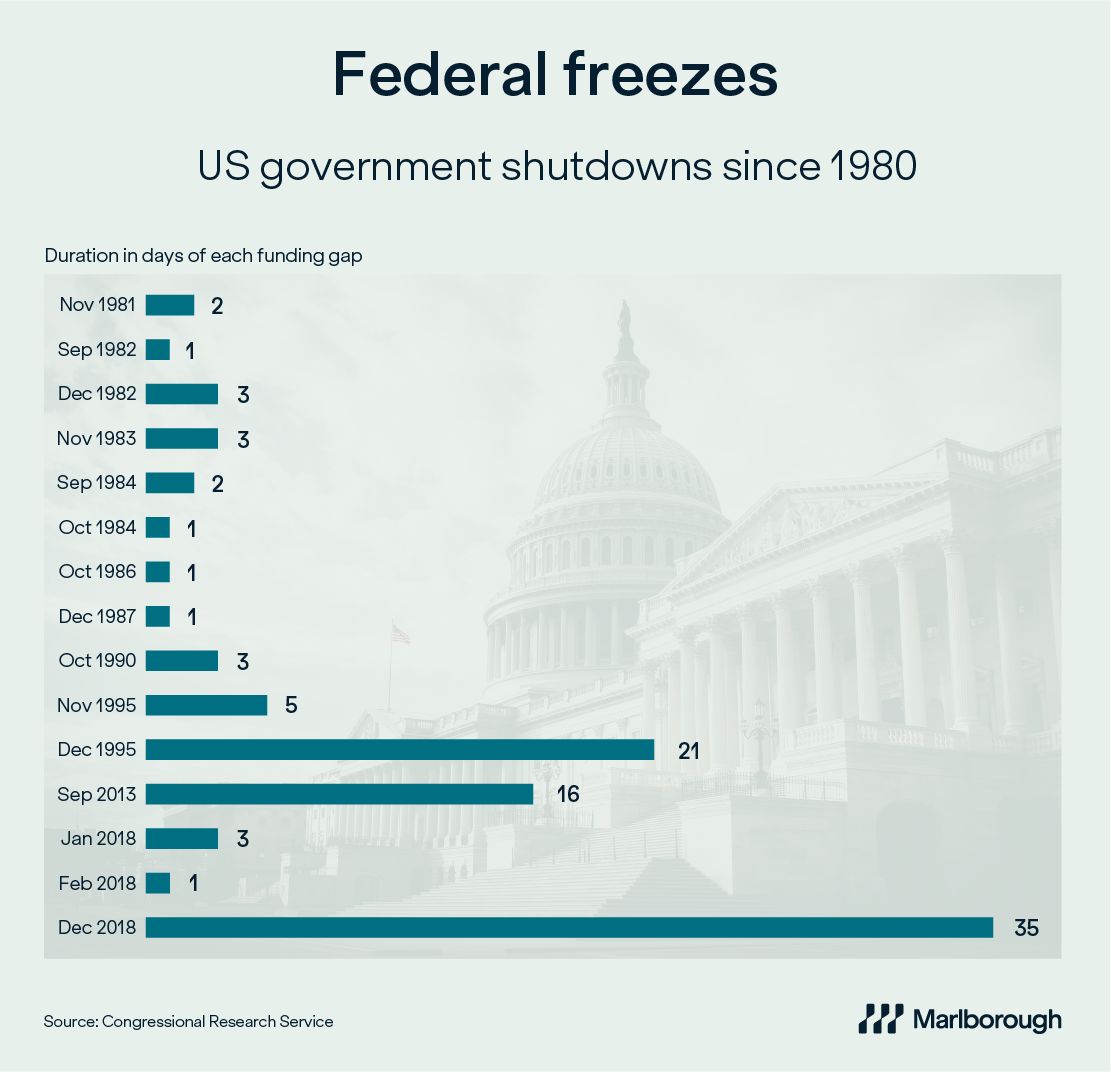Chart of the Week: Let It Go – Disney classics and the US government

Welcome to this week's 'Chart of the Week', where we share key insights to help keep you informed on what's happening in the markets.
My two young kids are in their Disney phase. Like most parents, I’m now watching the classics on repeat. What strikes me, watching these films again as an adult, is how they all follow the same pattern – a hero’s journey with struggle, often tragedy, before the inevitable triumph. And, of course, children have a habit of moving on from one obsession to the next, the same film played endlessly until the next big thing comes along.
Right now, one of the ‘big thing’ narratives that’s dominating the global stage isn’t a Disney sequel, but the US government shutdown. Just like a familiar Disney storyline, we’ve seen this one before: struggle, stalemate and eventually resolution.
Why does it happen?
The US Congress must pass spending bills each year to keep government running. If they can’t agree, or even pass a short-term stopgap measure, the government legally runs out of money. ‘Non-essential’ services shut down, national parks close and hundreds of thousands of federal workers are sent home without pay.
What’s happening now?
Congress failed to agree a last-ditch deal last week and roughly 750,000 workers have been furloughed. Air travel, national parks and museums could all face disruption in the first shutdown in almost seven years. Analysts warn it could be more severe than the 35-day shutdown in 2018-19, which, as our chart shows, is currently the longest on record.

Why the deadlock?
At its heart, this is about the Republicans and Democrats refusing to compromise on spending priorities. The stalemate has a particular focus on healthcare subsidies. Republicans argue they are too costly, while Democrats say they must be extended. With 60 votes needed in the Senate to pass a funding bill, the Republicans cannot do it alone. President Donald Trump, for his part, has threatened mass firings and cuts to programmes Democrats support, treating the shutdown as a political weapon.
Why does it matter?
Shutdowns are costly. The Congressional Budget Office estimated the 2018-19 impasse shaved 0.1–0.2% off US GDP per week. Markets usually shrug off short disruptions, but a prolonged shutdown could dent confidence, delay government contracts and affect consumer sentiment.
Key takeaway
Much like a Disney story, this shutdown will eventually end, although not before we have seen conflict and disruption. However, for investors, it’s important to remember that while these government shutdowns keep headline writers and television pundits busy, they rarely alter the long-term economic and market outlook.
Find out more about our multi-asset solution
This article is provided for general information purposes only and should not be construed as personal financial advice to invest in any fund or product. These are the investment manager’s views at the time of writing and should not be construed as investment advice. The opinions expressed are correct at time of writing and may be subject to change. Capital is at risk. The value and income from investments can go down as well as up and are not guaranteed. An investor may get back significantly less than they invest. Past performance is not a reliable indicator of current or future performance and should not be the sole factor considered when selecting funds.




